Index

Review: Better cooling for GHz Edition and factory OC
Based on AMD's HD 7970 GHz Edition, or Tahiti XT2 GPU with 2048 stream processors, the Club 3D HD 7970 royalAce has been set to work at 1050MHz for the base and 1100MHz for boost GPU clock with 3072MB of GDDR5 memory clocked at 6000MHz and paired up with a 384-bit memory interface.
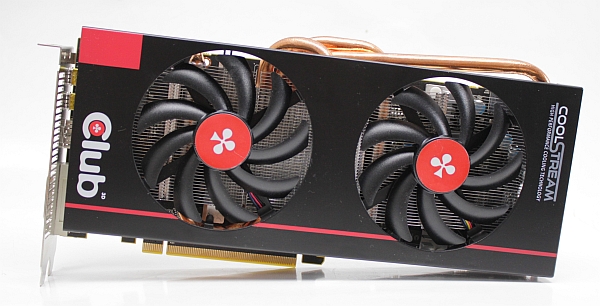
Club 3D’s packaging is miniature yet tough enough and also has plenty of info on it. Of course, the emphasis is on the GHz Edition of AMD’s HD 7970 but the fact that it’s a special Club 3D RoyalAce SuperOverClock version wasn’t ignored either.
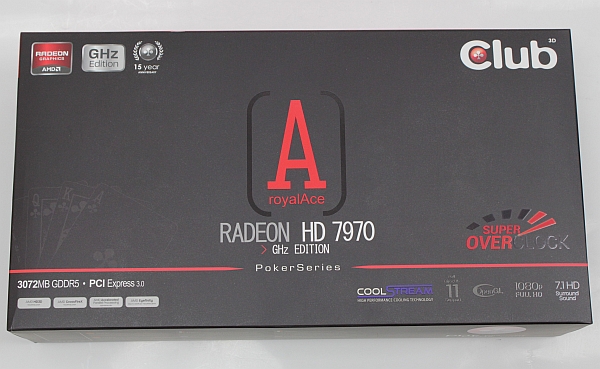
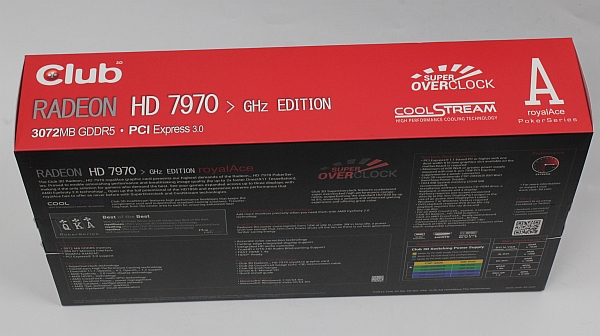
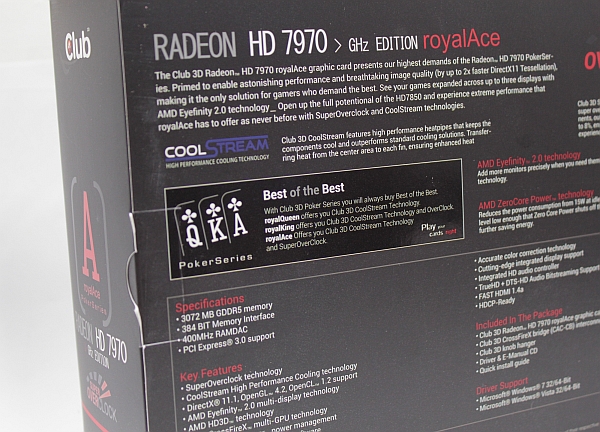
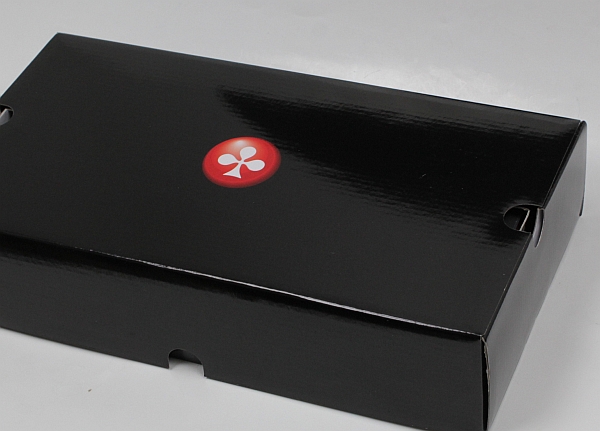
The box holds the graphics card, driver CD and a CrossFire connector. Similarly to what we’ve seen from XFX in these past years, Club3D decided to bundle a knob hanger saying “Do Not Disturb, Gaming in Progress”, for gamers who don’t like interruptions.
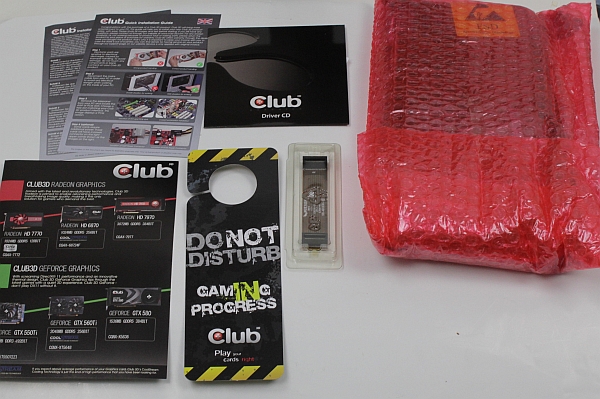
HD 7970 royalAce graphics card is special for its cooler, which is based on Cool Stream technology. Unlike reference cooling, where the fan is located towards the end of the card and blows through the card, Club3D opted for two fans that push air downwards, straight at the heatsink. As a result, some of the heat may be released inside the case so you might want to make sure your in-case airflow is adequate.

Both fans are connected to the same 4-pin power connector and the RPM can be regulated in Catalyst Control Centre.
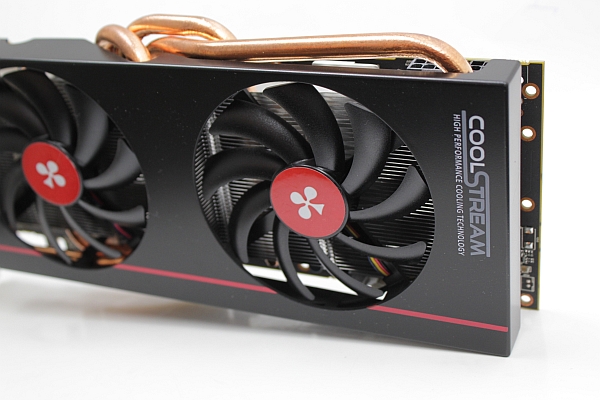
The company used thick heatpipes that transfer heat to the farthest parts of the heatsink with ease. Due to the tall heatpipes, and the way they’re bent, the cooler is a few centimeters taller than the standard cooler. Still, although it exceeds the height of the PCB, even the most traditional of cases shouldn’t have problems fitting it inside. You can get a better idea of how tall they are when the card is viewed from the back.
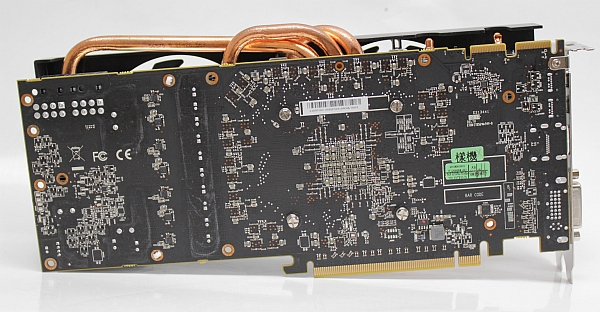
Just like the reference card, the card uses one 6-pin and one 8-pin power connector.
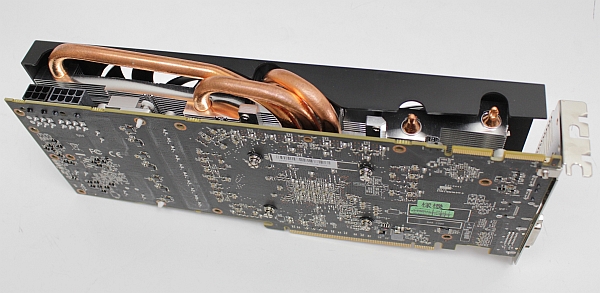
Three heatpipes go through the cooler but Club 3D made sure they’re bent in a way so as to provide five contact points.
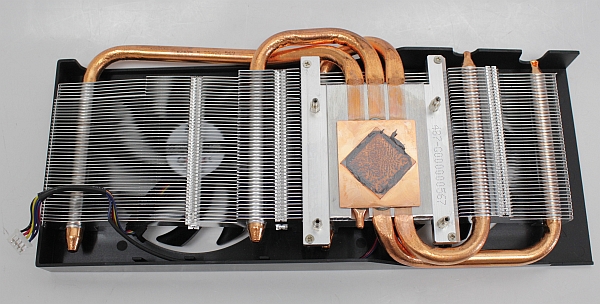
You can see where the GPU touches the base, as well as the fact that the HD 7970’s GPU is rotated by 45 degrees. The cooler is held in place with four screws only, but we didn’t notice any instability or vibration.
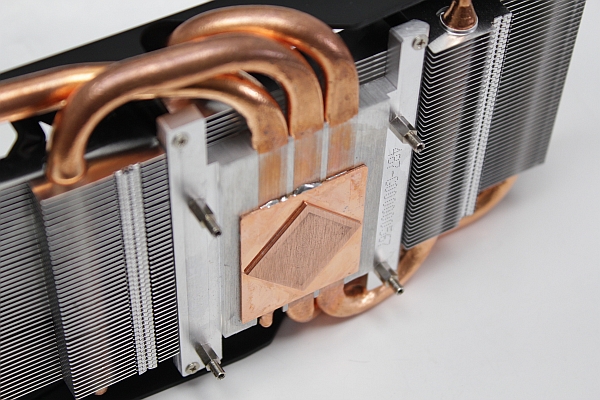
The card has 3GB of Hynix memory, which we’ve grown accustomed to seeing on pretty much hall AMD and Nvidia cards. The memory is rated at 1500MHz and this card is no exception.
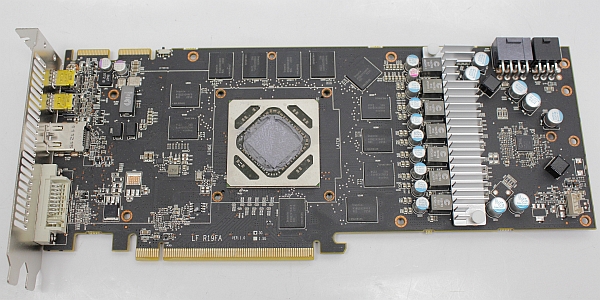
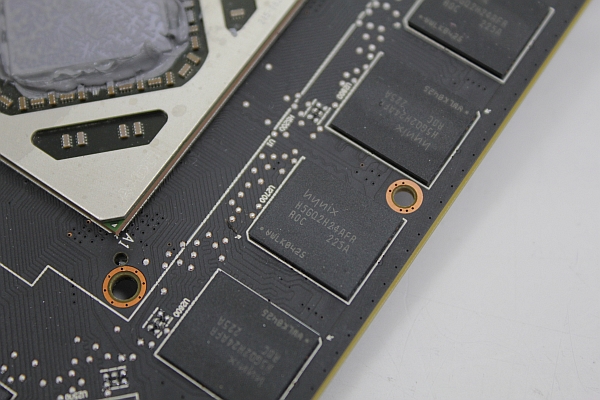
The I/O panel has one dual-link DVI, standard HDMI out and two mini DisplayPort outs.
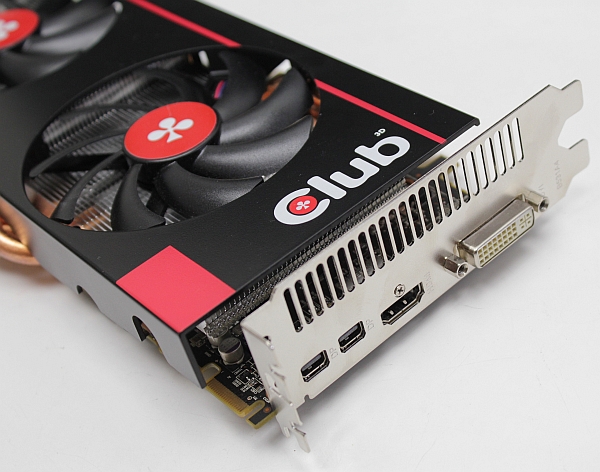
HD 7970 royalAce comes with two CrossFire connectors, meaning that it’s possible to daisy chain up to four cards for some fierce CrossFireX muscle. Although the shroud hides the CrossFire connectors, it will not be a problem as CrossFire bridge connectors are flexible.
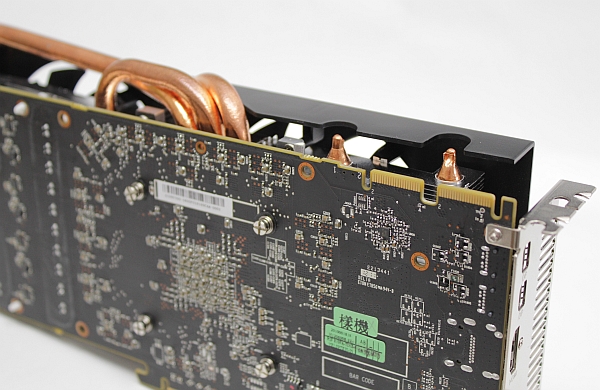
The Club 3D Radeon HD 7970 royalAce comes with a toggle switch. This switch allows you to switch between two separate BIOS versions, 1) factory defaults and 2) unprotected. The graphics card comes standard at 1050 MHz GPU clock speed with overclocking headroom up to 1.1GHz and beyond.
Motherboard: EVGA X79 FTW
CPU: Sandy Bridge-E Core i7 3820 (3.6GHz)
CPU Cooler: Thermalright HR-02 (Thermalright-Europa Distri www.PC-Cooling.de).
Memory: 8GB ADATA DDR3 1600 XPG Gaming series
Harddisk: OCZ Vertex 2 100 GB
Power Supply: CoolerMaster Silent Pro 1000W
Case: CoolerMaster Cosmos II Ultra Tower
Operating System: Win7 64-bit
Nvidia 305.37-desktop-win7-winvista-64bit-english-beta
AMD 12-8_vista_win7_64_dd_ccc.exe
(AMD HD 7970 : 12-6 12-6_vista_win7_64_dd_ccc.exe)
(EVGA GTX 690 4GB & Gainward GTX 670 Phantom SLI : 301.34-desktop-win7-winvista-64bit-english-whql)
3D Mark 11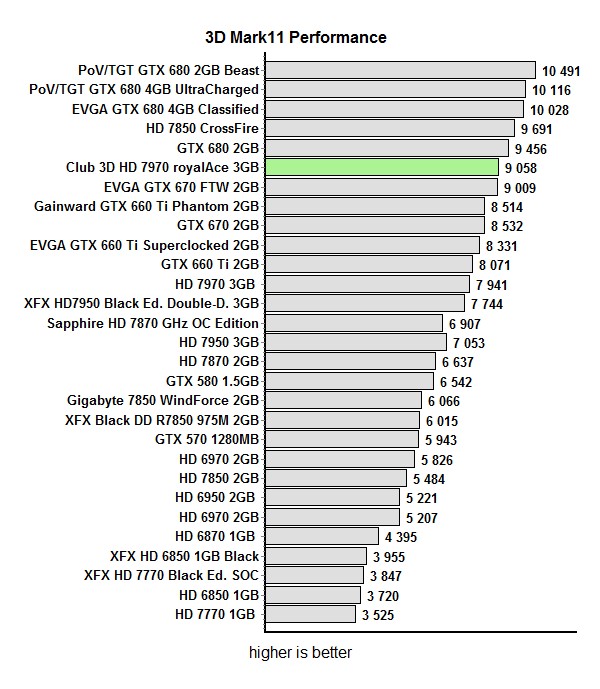
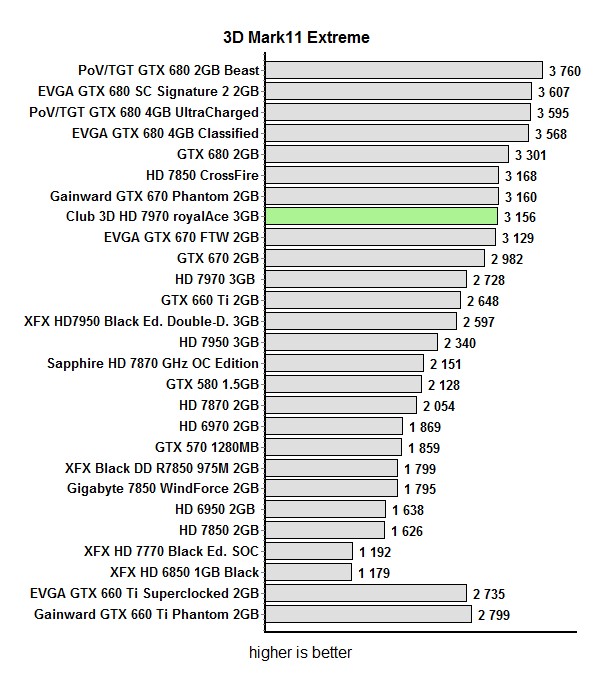
Crysis 2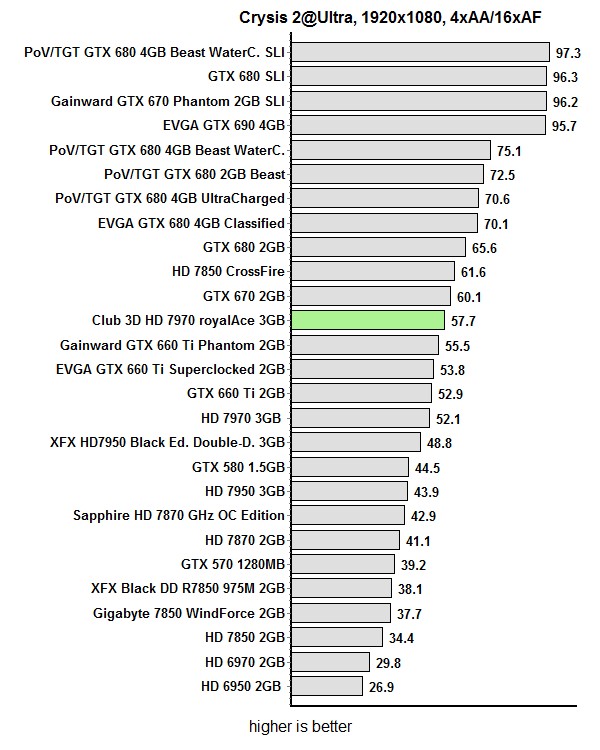
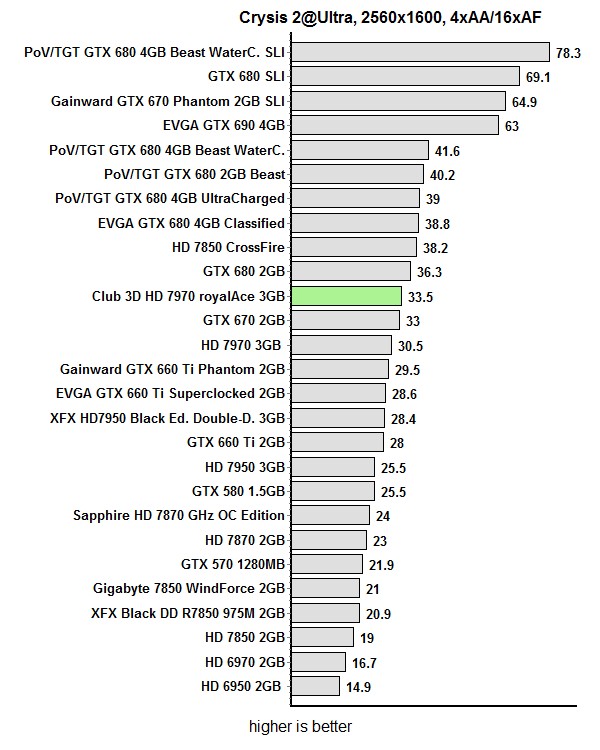
Aliens vs Predator
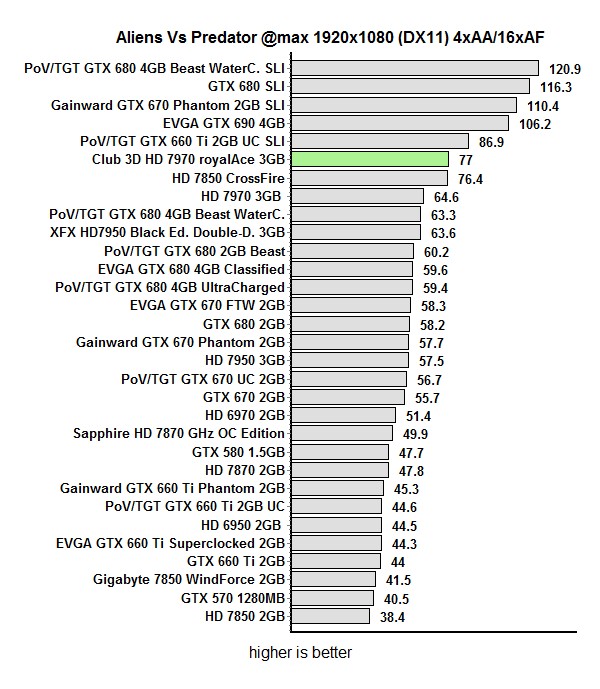
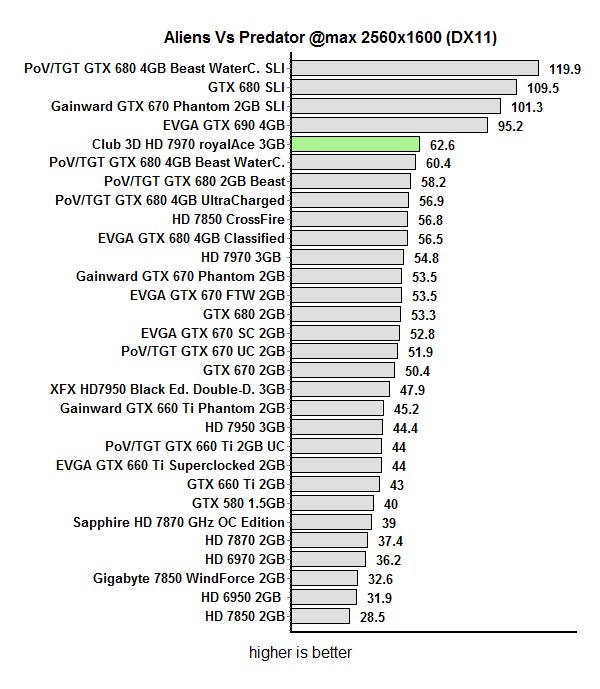
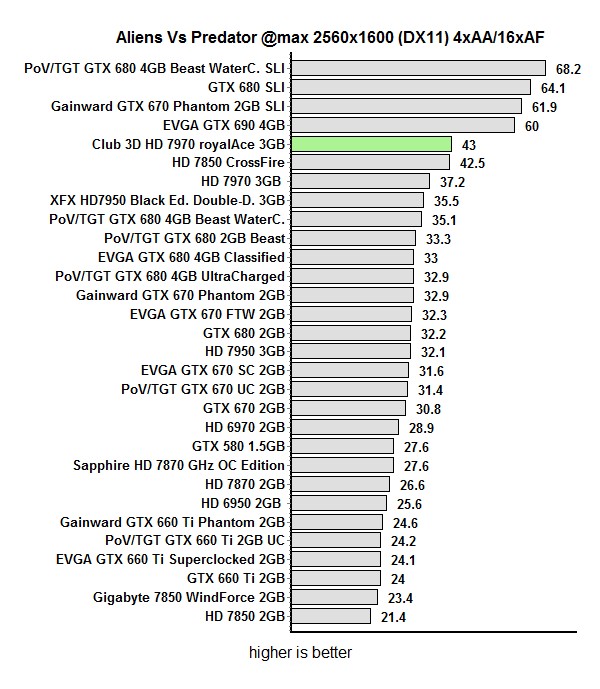
Metro 2033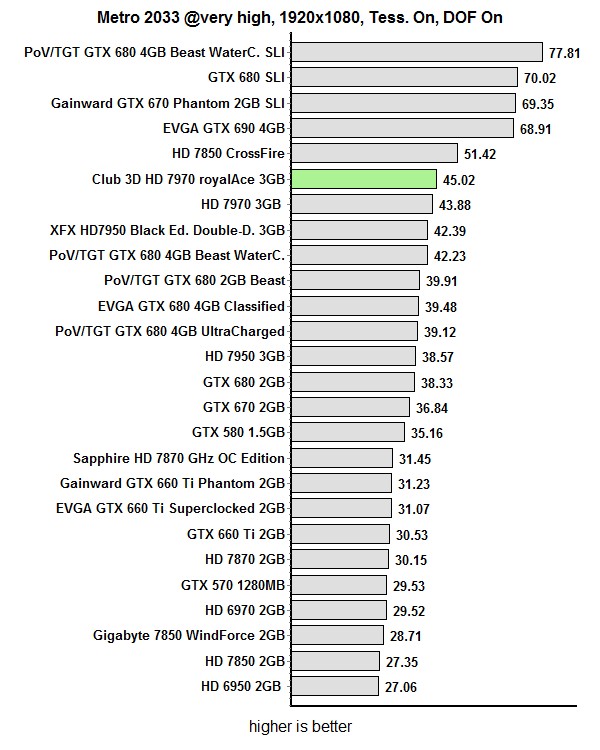
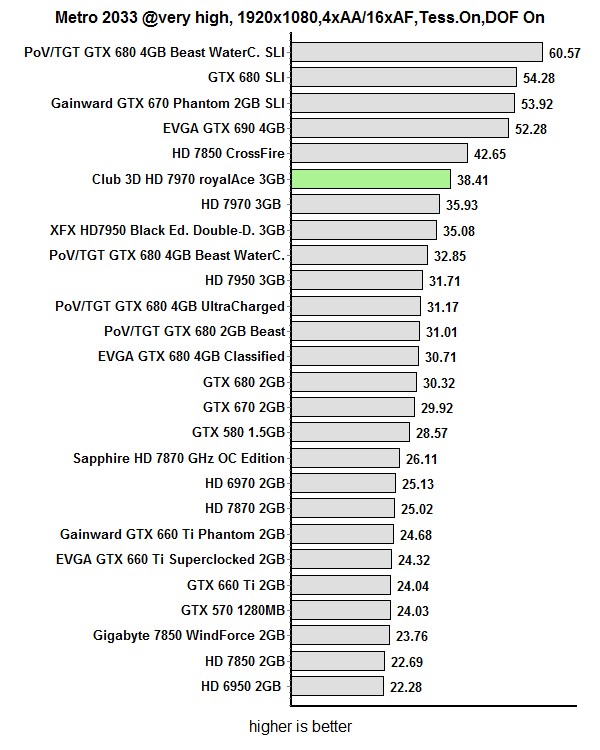
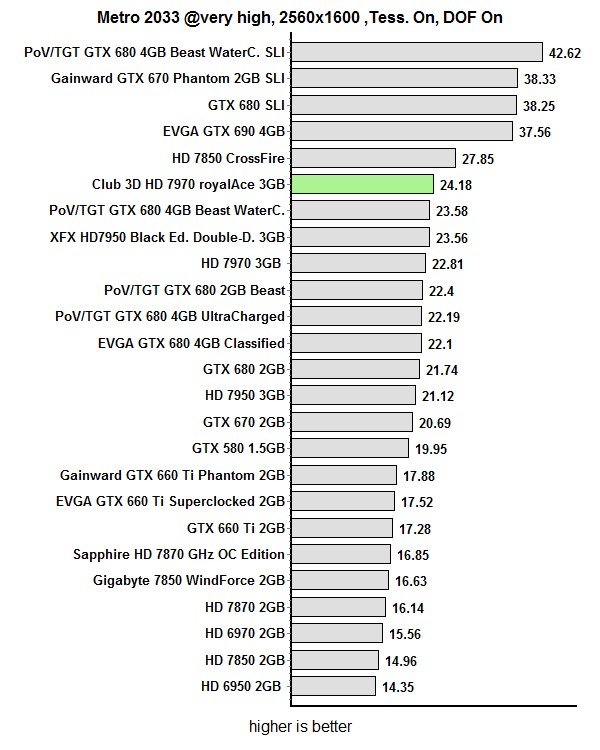
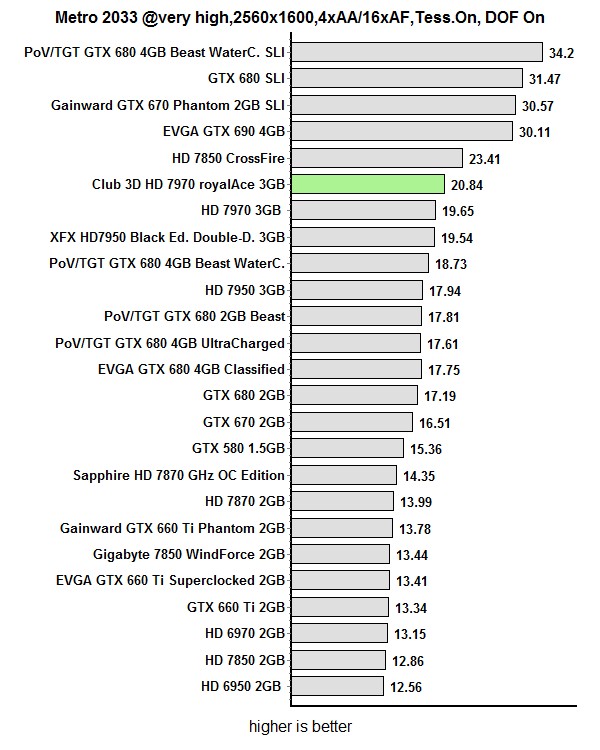
Unigine Heaven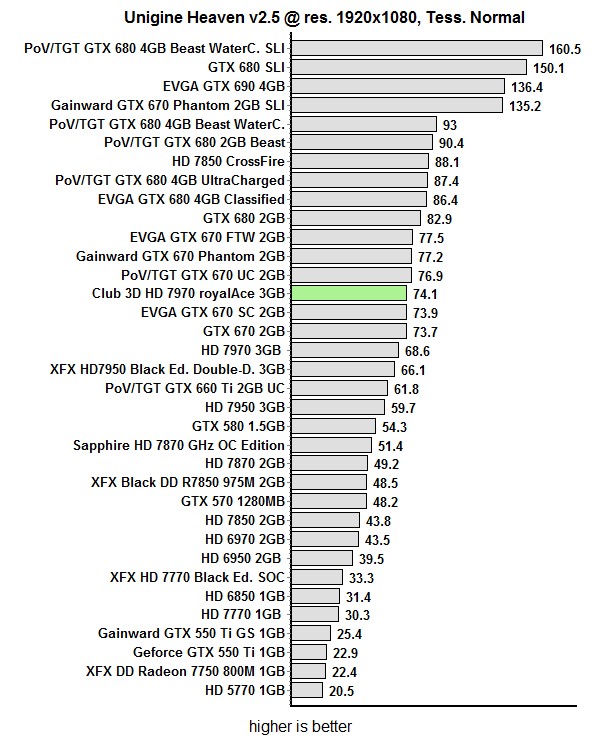
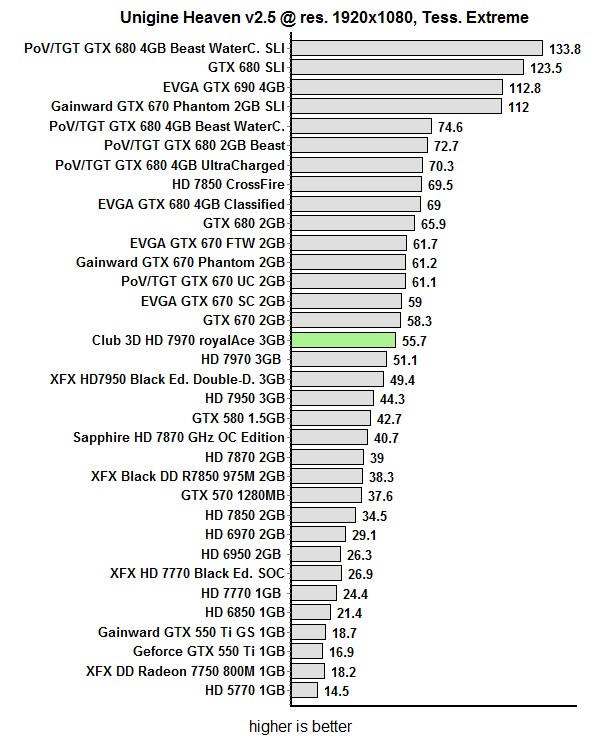
Overclocking the core by additional 110MHz was a pretty nice result, seeing as how the card already runs 50MHz faster than the reference 1GHz. After our overclock, GPU Boost clock was 1210MHz. We squeezed out another 80MHz from the memory (240MHz effectively). We left the fans in AUTO mode – there was no need to speed them up manually since the temperatures went up to 78°C after our overclock. We’ll discuss thermals in more detail next.
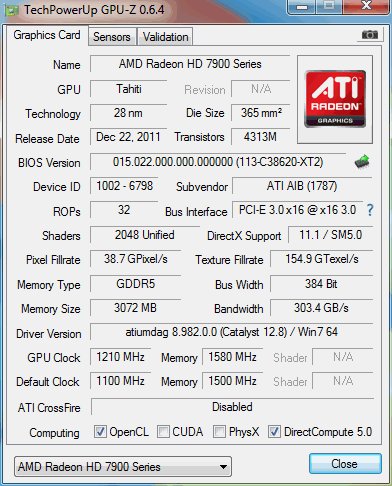
Thermals and Noise
Thanks to the CoolStream technology, which involves a large heatsink, two fans and specially bent heatpipes, Club3D’s solution outperforms the reference one. The feat is all the more impressive considering we’re talking about a factory overclocked GPU here .
When idle, the GPU was around 39°C and the fans were quiet. After longer gaming sessions, temperatures climbed up to 76°C. When the card got hot, we could hear the fans easily (they ran at about 2900RPM), but they were still music to our ears compared to the overly loud reference solution.
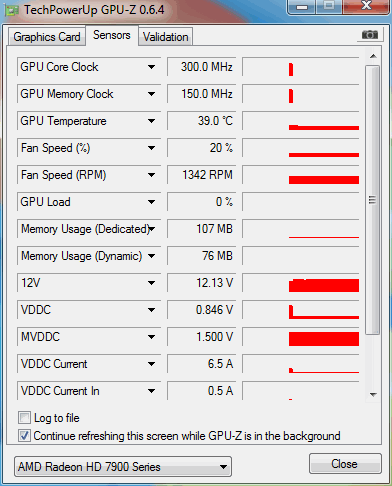
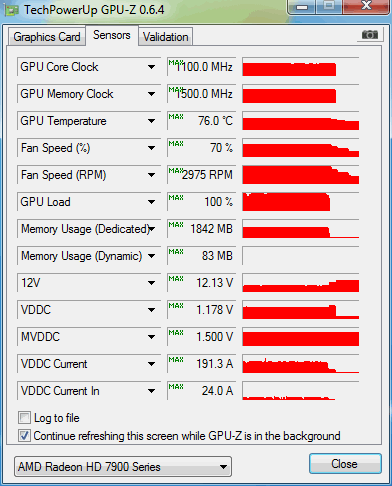
We had to remove the thermal paste that was on the base of the cooler, because it seems that the screws were a bit loose, which caused the paste to harden. Our first attempt at testing resulted in temperatures over 90°C, which was a clear indicator that something went wrong somewhere. Luckily, we fixed it and the cooler started showing its real face. We had no need for manual RPM settings, not even after overclocking, because auto-regulation ran just fine and temperature never exceeded 78°C. Our additional overclock made the fans louder, but not to the point where we’d call them too loud.
Power Consumption
AMD HD 7970 GHz Edition can draw significantly more power than the initially launched HD 7970 cards, which run at 925MHz.

Club3D launched three cards in its HD 7970 Poker series – royalAce is the fastest (1050MHz GPU), followed by royalKing (975MHz GPU) while the slowest in the series is the royalQueen (925MHz GPU). All the cards are special for the dual-fan cooling, which performed well on our tests.
Club3D produced an ace from its sleeve when it decided to strap the HD 7970 with special cooling, especially in the case of its highly overclocked HD 7970 royalAce SuperOverClock card. The cooler isn’t as quiet as the GTX 680’s, but it isn’t too loud either, which is more than we can say for AMD HD 7970 GHz Edition’s reference cooler that’s already drawn enough criticism in this respect.
Thanks to the 50 MHz higher GPU clock than that of the regular HD 7970 GHz Edition, the royalAce card beats the GTX 680 in most games.
If you’re the kind that obsesses over the power bill, then HD 7970 GHz Edition probably isn’t your cup of tea since the cards consume significantly more than reference HD 7970s. Additionally, performance-per-Watt ratio on high end graphics cards is something where Nvidia takes the cake, at least when it comes to the last generation of graphics.
In conclusion, the HD 7970 royalAce is definitely a card that any gamer wouldn’t say no to. Ultimately, our decision is well backed by our testing and we’re looking at one of the fastest single GPU graphics cards on the market, with a factory overclock, special cooling and further overclocking headroom.



